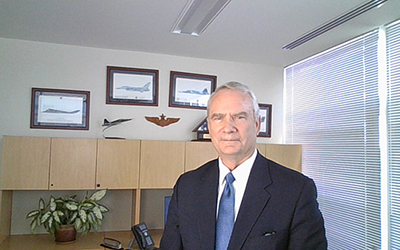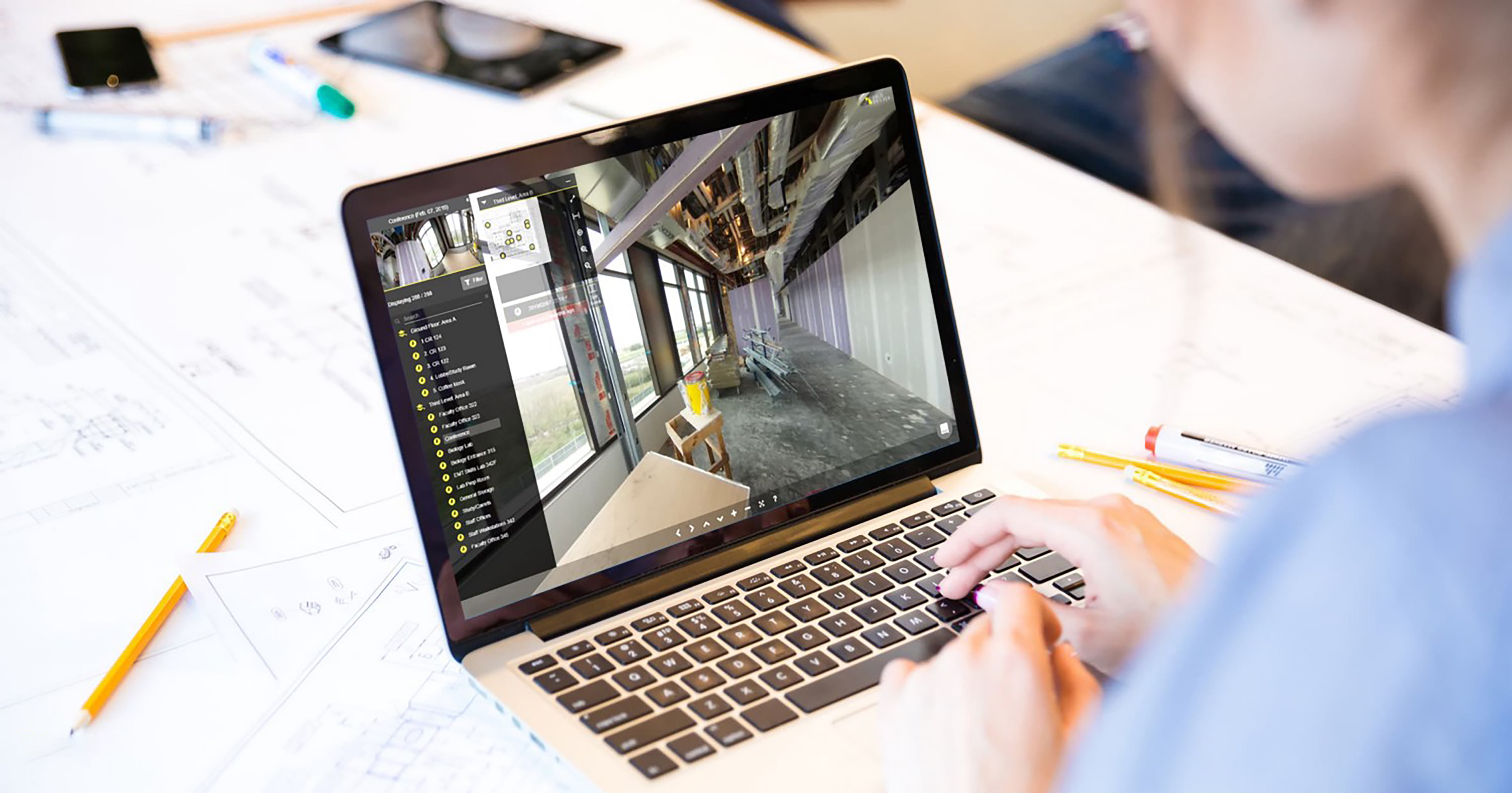
Garret Whitescarver, Chief Building Official with Washington, D.C.’s Department of Consumer and Regulatory Affairs.
A conversation with Garret Whitescarver of Washington, D.C.’s Department of Consumer and Regulatory Affairs
For building inspectors, the novel coronavirus has made many of them rethink the way they approach building certifications, and even the way they interact with people on the jobsite.
SMACNews recently interviewed Garret Whitescarver, Chief Building Official with Washington, D.C.’s Department of Consumer and Regulatory Affairs. As the head of the D.C. government office that handles building inspections and permitting throughout the district, Whitescarver manages a staff of 225 building inspectors and has to figure out how to safely and efficiently continue certifying newly constructed and renovated structures while keeping his staff safe.
Previous work in the residential and commercial construction industry enables Whitescarver to have a deep understanding of the department’s inspection work that continues today. Whitescarver has also been a recent guest speaker for the International Code Council on the Effects of COVID-19 on the building safety industry.
Replies have been edited for clarity.
Q: How did you become involved in building inspection and code enforcement work?
A: I came from a military background, then transitioned into the private sector. Most folks that get into this role start off either in the plan review section of a building department or in the inspection section. I started off in the inspection section, but then rapidly advanced because of my military officer background which helped me smoothly transition into supervision, and then in 10 short years, being in charge of the organization.
Today, the department has about 225 employees. We are involved in the initial application of permits and the review of documentation for permit issuance, which allows the construction to occur. And then we subsequently inspect the work to verify code compliance.
Q: And that brings you in contact with SMACNA members?
A: (Yes). A big part of that equation is working with the local experts, the tradespeople and trades boards to try to ensure that the standards of training on the professional-end are as high as possible so they’re as aware as they can be of code requirements.
Q: What has been the impact of the District’s stay-at-home orders on your department?
A: I would say, conservatively, I probably have no more than five in the building right now originally set up to have 225 full-time employees at desk. And in any one day, I probably have no more than about 40 to maybe 50 folks that actually transition through the building in a day.
Q: Has anyone in the department come down with coronavirus?
A: We haven’t had any construction inspectors — knock on wood — that have come down with it. We’ve had some housing inspectors come down and get positive (tests). The difference being that they were going into residential buildings rather than individual’s apartments or homes.
Q: And has coronavirus impacted demand for your services?
A: Across the board, we’re seeing anywhere between a 20% and 30% reduction in permit applications.
Q: Does that mean your staff has less work to do?
A: Most of all the jobs we’re working on now have been in the pipeline for a while. So COVID actually did not change the production rate. We have had the capability of doing permits. As far as the processing of those requests. The fact that we’re working in a virtual environment didn’t change our overall productivity at all. So we have the same number of inspectors we had pre-COVID. We have the same number of plan reviewers pre-COVID. The department is all functioning as if we were in this building. We’re just not physically here anymore.
We don’t really have a backlog at all. It only takes a day or so now to get to a job site. If it picks up, we could get back into typical delays.
One thing that’s different in the District of Columbia than other areas is that we heavily outsource inspections to third-party companies. If the district can’t get to you fast enough, you can outsource to a third-party company. You pay for that, or your client would pay for the outsourced inspection, but you can do it without any delays.
Q: Some jurisdictions have moved toward virtual building inspections as a way to minimize personal contact during a pandemic. Has your department explored this?
A: It’s only for lack of a vision on our part that we haven’t really figured out a real good way to do virtual inspections for construction very well. Now there could be an exception (established) for the HVAC industry. For instance, we’ve had an exception for quite a while in the solar industry.

We’ve allowed the solar installers to take photos and to be available for FaceTime-type of inspections. When they’re up on a roof doing a solar panel, and we’ve tested that environment and we’re satisfied that we can satisfy the code requirements without necessarily being on site.
Now I can see portions of the HVAC industry, how that same philosophy could carry through. We haven’t pursued it heavily because we still have inspectors in the field doing their construction inspections.
But I think there is an opportunity here, if we can create one, where certain specialty industries, such as the HVAC industry could transition into more virtual environments to the benefit of both the jurisdiction and the contractors. If you think about it, if you don’t have to wait for an inspection, you can just basically call up somebody and your inspection is instant. As soon as you get on FaceTime, you’re instantly available to an inspector and can get your work done.
There’s no sitting around job sites waiting for inspectors. There’s no waiting at the curb, you know, in your truck waiting for an inspector. All this can be done real time and do the advantage of the jurisdiction. You’re working with the person who actually did the install and not somebody the company hired to wait for the inspector.
Q: How would an industry like HVAC pursue virtual inspections?
A: To pursue this, I would encourage the HVAC industry to reach out to specific jurisdictions because that’s what the solar industry did, and they worked out a method for doing virtual inspections. Each jurisdiction, each building official out there, has the authority to decide if this is the direction they want to go in or not. But the building officials all talk, just like industry talks to one another. And so, if a trend developed, there are leadership jurisdictions, and there’s ones that go along with the ride. If the industry can work with local jurisdictions, the larger ones, and get it as an established policy or practice of how they’re going to perform these virtual inspections on site for the HVAC industry…And maybe just niches within the HVAC industry — like residential — could work with those jurisdictions. And then have those jurisdictions publish the methodology that they’ve cited through the International Code Council.
If you do that, other jurisdictions will pick up on it and you could see a wave change through the industry from an HVAC contractor’s perspective, and the jurisdictional perspective and change paradigms, if you will, on how inspections can be conducted.
Q: Are there any technical challenges related to virtual inspections of these building systems?
A: One of the things that makes construction inspections difficult is that you can only see what the camera’s pointing at and often the things you catch as an inspector, are the stuff that no one’s really looking at.
But the HVAC industry is one of those unique niches where you’re looking at specific pieces of equipment. You’re not looking at all the framing in a building, you’re looking at specific pieces of equipment. Did you attach this safety device? Did you attach the ducts safely? Did you ground this? Did you test this? That kind of thing.
I think that industry, just like the solar industry, lends itself to being able to transition to a virtual environment, much easier than others.
Q: Do you think most parts of an HVAC inspection could be handled remotely?
A: There could be certain things that would have an exception. Say, like a light test for a type 1 hood duct. I’m not sure how you’d do that with a camera and catch every pinhole light that there is. But the more people from the industry and the more the jurisdictions get used to the capabilities of the system, the more trust and faith there would be that we can get this done together.
Once you’ve done a few of these virtual inspections, there’s nothing I like more than being with some kind of master technician who can, who can point things out that I didn’t even know as a code professional. And so having that kind of person on the camera pointing to things that he wants to point out and then have an inspector point to things that he’s interested in looking at, we can get a lot smarter as an industry.
Q: Has the pandemic changed any of your safety practices?
A: The notion of what is safe on a jobsite has changed significantly. As you know, the overall industry’s idea of safety now, a lot of it’s revolved around PPE. In the past, it’s been around ladder safety and all these other safety items, but now PPE is the number one thing that has impacted my business, just making sure that the inspectors are equipped.
Q: Are you enforcing PPE rules on the job site?
A: Absolutely. Every inspection, we have certain criteria of having hand-wash stations, cleanliness and PPE use as promulgated by the mayor’s office, and our inspectors are looking for that as well. We have had some sites where we’ve had to admonish them. We haven’t had to shut down any job sites yet, but we’re fully prepared to do that.
Most job sites realized that they could be on the receiving end of a pretty harsh judgment as far as staying home (not working). And they’ve, been given the nod to stay at work during this whole thing. None of the construction industry in the district has been adversely impacted by a jurisdictional order not to go to work. And I think as an industry, the evidence shows that they’ve pretty much respected that position and are taking the necessary steps to protect their folks.
Q: What do you think will be the lasting impact of the pandemic on building inspections and code inspection practices?
A: I think we’ll keep the virtual environment going. As an industry, we started talking about virtual environments two years ago in regards to how we could do inspections more quickly and effectively.
The technology will continue to progress in that direction. In the HVAC industry in particular, you’re going to see building owners and business owners sharing an interest in creating HVAC systems that give confidence to the workforce returning to the workplace as opposed to working remotely.
And so I think the industry is going to have all kinds of new demands on it to take, say, the plenum supply or return and change designs in buildings. I think there will be a lot of interest in the air quality going into buildings and the air movement within buildings. There should be a whole new respect for the industry. Your industry should be getting a real shot in the arm. It’s been one of those things that’s probably just an afterthought before the pandemic, but now the whole airflow system is being looked at as far as individual safety and individual comfort.
You guys are sitting in a real good spot.
___
U.S. cities and counties currently conducting virtual inspections are listed on the ICC’s website at www.iccsafe.org/advocacy/coronavirus-response-center/virtual.
District of Columbia Department of Consumer and Regulatory Affairs »